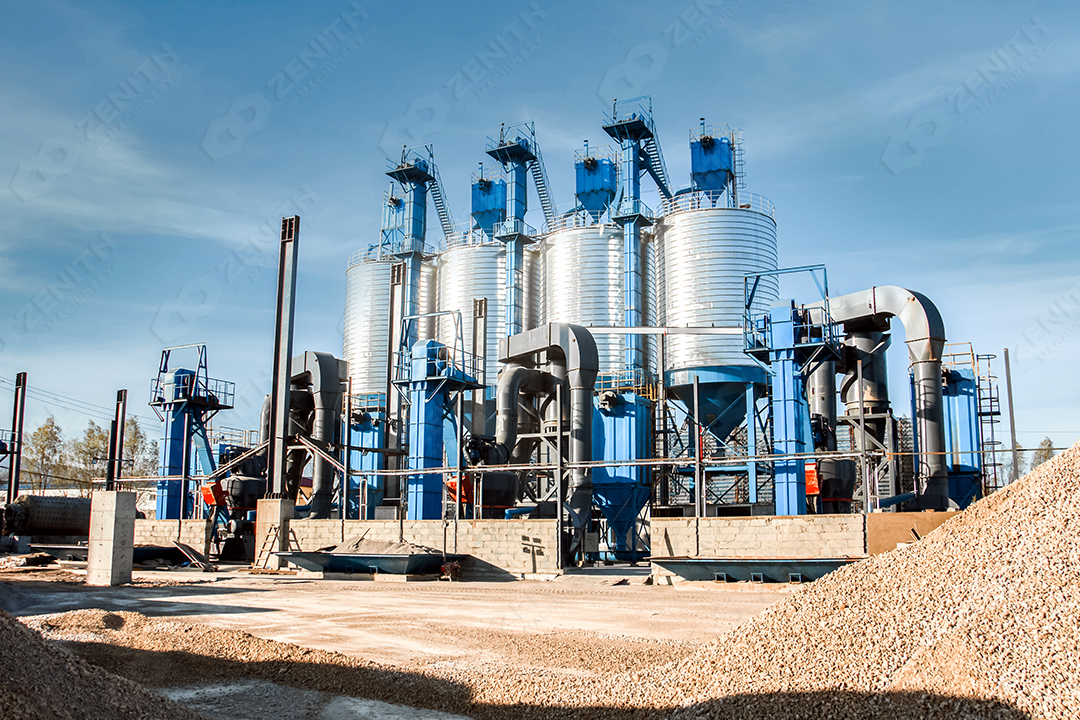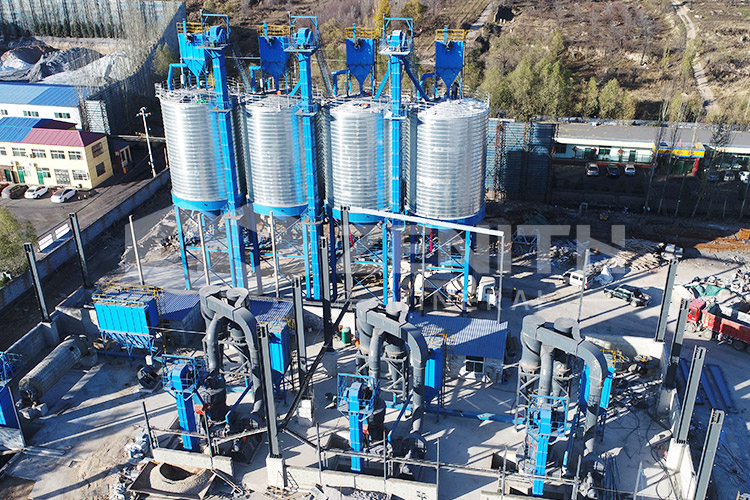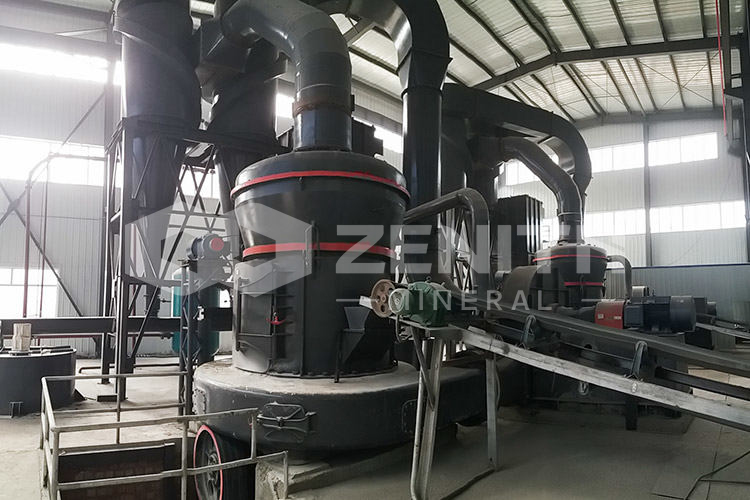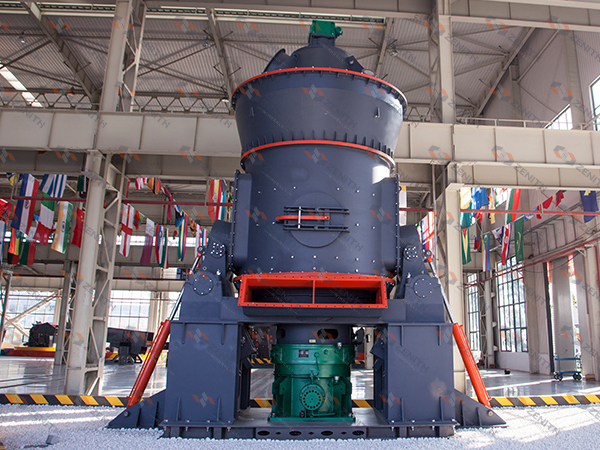Process flow for processing quicklime into desulfurization stone powder for power plants
2025-11-12 20:54:36
In modern power generation, flue gas desulfurization (FGD) represents a critical process for reducing sulfur dioxide emissions and meeting environmental regulations. The transformation of raw quicklime into precisely graded desulfurization stone powder requires sophisticated processing technology and reliable equipment. As a leading industrial machinery provider with decades of experience, Zenith has developed comprehensive solutions that optimize this conversion process for maximum efficiency and environmental compliance.
The journey begins with raw quicklime (calcium oxide) delivered to the processing facility. This material typically arrives in chunks of varying sizes, requiring initial preparation before fine grinding can occur. The first stage involves primary crushing to reduce large quicklime pieces to manageable sizes of 0-35mm, making them suitable for feeding into grinding mills. Proper sizing at this stage is crucial for ensuring consistent feed rates and optimal mill performance.
_1762952076813.jpg)
Following initial size reduction, the prepared quicklime enters the heart of the processing system: the grinding mill. For desulfurization applications, the required fineness typically falls between 200-325 mesh (74-44 microns), though specific power plant requirements may vary. Zenith's MTW European Trapezium Mill stands as an ideal solution for this application, offering precise control over particle size distribution while maintaining high throughput capacities of up to 50 tons per hour.
The grinding process itself follows a sophisticated mechanical pathway. Crushed quicklime enters the main grinding chamber where rotating grinding rollers apply pressure against a stationary grinding ring, effectively pulverizing the material through compression and shear forces. The unique design of the MTW mill ensures even pressure distribution across the grinding components, resulting in consistent particle size and reduced wear on mechanical parts.
_1762952076815.jpg)
Following the grinding phase, the powdered material enters a critical classification stage. Here, an integrated powder selector separates particles based on size using centrifugal forces and airflow. Qualified fine powder proceeds to collection systems, while oversized particles return to the grinding chamber for further processing. This closed-loop classification system ensures that only properly sized material advances, maintaining strict quality control over the final product.
For power plants requiring ultra-fine desulfurization powder, Zenith's LUM Ultrafine Vertical Grinding Mill offers advanced capabilities. This system can produce powder ranging from 325 to 2500 mesh, with precise control over particle size distribution. The vertical design incorporates German powder separation technology and Taiwanese grinding roller expertise, creating a system specifically optimized for mineral processing applications like quicklime grinding.
_1762952076817.jpg)
Throughout the grinding process, environmental considerations remain paramount. Zenith's milling systems operate under negative pressure conditions, preventing dust emissions and maintaining clean working conditions. Integrated pulse dust collectors capture any fugitive particles, ensuring the process meets stringent environmental standards. This closed-system approach minimizes material loss while protecting both workers and the surrounding environment from particulate exposure.
The final stage involves collection and packaging of the finished desulfurization stone powder. Cyclone collectors and baghouse filters separate the powder from the transport air, after which the material is typically stored in silos or packaged for transport to power plants. The entire process from raw quicklime to finished desulfurization powder represents a seamless integration of mechanical processing, classification, and collection technologies.
_1762952076819.jpg)
Zenith's approach to desulfurization stone powder production emphasizes not only operational efficiency but also economic and environmental sustainability. The MTW and LUM mill series consume approximately 60% less energy than traditional ball mills while delivering superior product quality. This significant reduction in power consumption translates to lower operating costs and reduced carbon footprint for power plant operations.
Modern power plants increasingly demand desulfurization agents with specific particle size distributions to maximize reaction efficiency in flue gas scrubbers. Zenith's grinding systems offer adjustable fineness controls, allowing operators to fine-tune output specifications to match changing fuel sources or emission requirements. This flexibility ensures that power plants can maintain optimal desulfurization performance even as operational conditions evolve.

The reliability of desulfurization stone powder production directly impacts a power plant's ability to comply with emission regulations. Zenith's equipment incorporates robust construction, premium materials, and intelligent monitoring systems to minimize downtime and maintenance requirements. With installations across more than 180 countries, these systems have demonstrated their capability to support continuous power generation operations under diverse operating conditions.
As environmental standards continue to tighten worldwide, the importance of efficient, reliable desulfurization stone powder production will only increase. Through continuous innovation and customer-focused engineering, Zenith remains committed to providing power plants with grinding solutions that balance performance, economy, and environmental responsibility in equal measure.
Frequently Asked Questions
What is the typical production capacity for desulfurization stone powder systems?
Production capacities vary based on specific equipment selection and fineness requirements. Zenith's MTW series can process 3-22 tons per hour, while larger models reach up to 50 tph. The LM Vertical Grinding Mill offers even higher capacities of 3-340 tph for large-scale power plant applications.
How does the energy consumption compare to traditional ball mills?
Zenith's advanced grinding systems consume approximately 60% less energy than traditional ball mills of equivalent capacity. The LUM Ultrafine Vertical Grinding Mill reduces energy consumption by 30-50% compared to conventional ultrafine grinding equipment.
What particle size range can be achieved for desulfurization applications?
Our systems can produce powder ranging from coarse 3mm particles to ultrafine 3250 mesh powder. For typical flue gas desulfurization, the optimal range is 200-325 mesh, which our equipment can consistently maintain with tight particle distribution.
How is dust control managed during the grinding process?
All Zenith grinding systems operate under negative pressure with integrated pulse dust collectors. This closed-system design prevents dust emissions and ensures compliance with international environmental standards for particulate emissions.
What maintenance is required for the grinding equipment?
Our systems feature modular designs with easily accessible wearing parts. The MTW and LUM mills incorporate hydraulic adjustment systems that allow quick replacement of grinding components, typically requiring minimal downtime for routine maintenance.
Can the same equipment process different types of mineral materials?
Yes, Zenith grinding mills are versatile and can process various non-metallic minerals including limestone, calcite, dolomite, barite, and talc. The same equipment can often be used for multiple applications with minimal adjustments.
What certifications do Zenith grinding systems carry?
Our equipment holds ISO international quality system certification, European Union CE certification, and Customs Union CU-TR certification, ensuring compliance with global safety and quality standards for industrial equipment.








